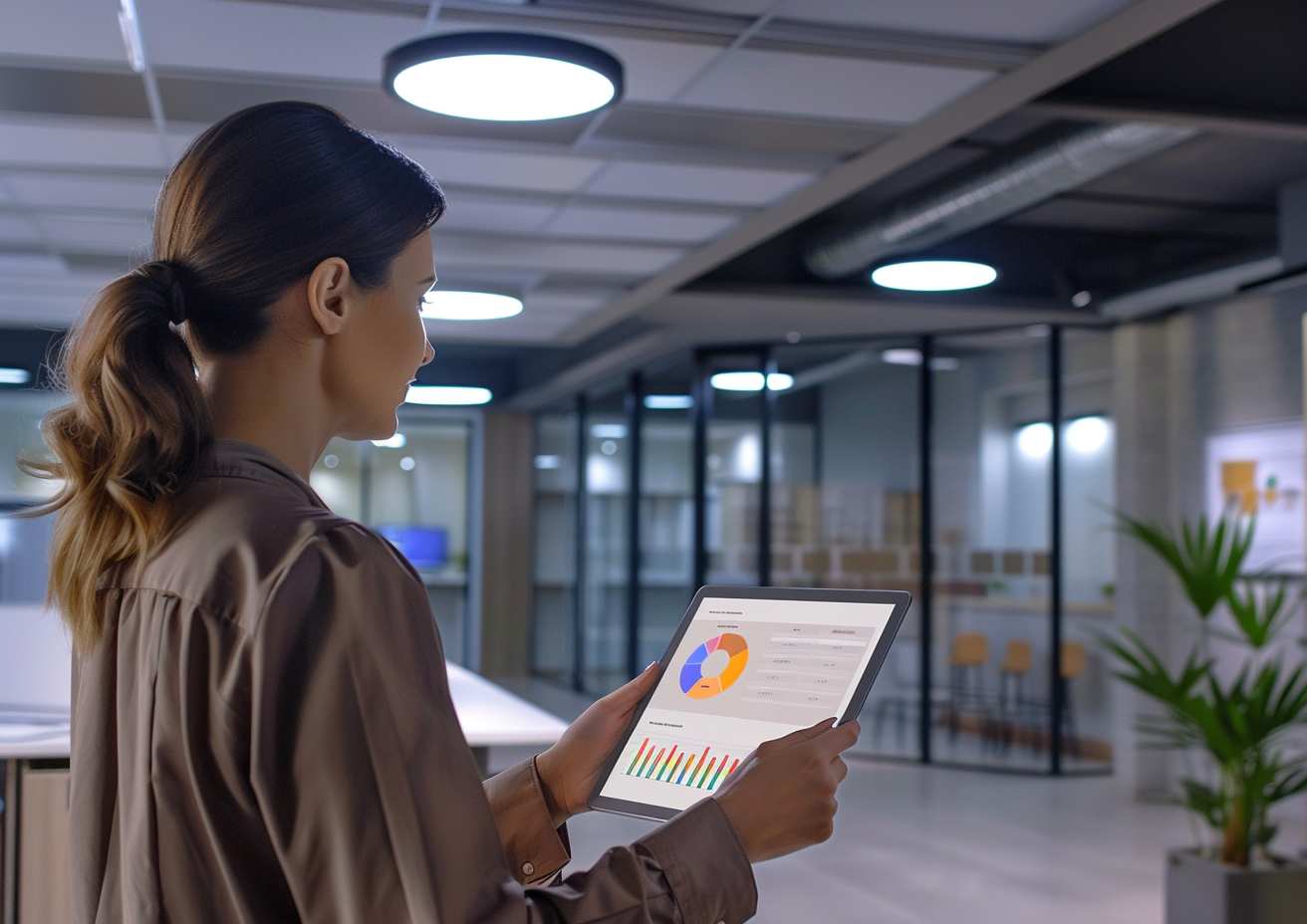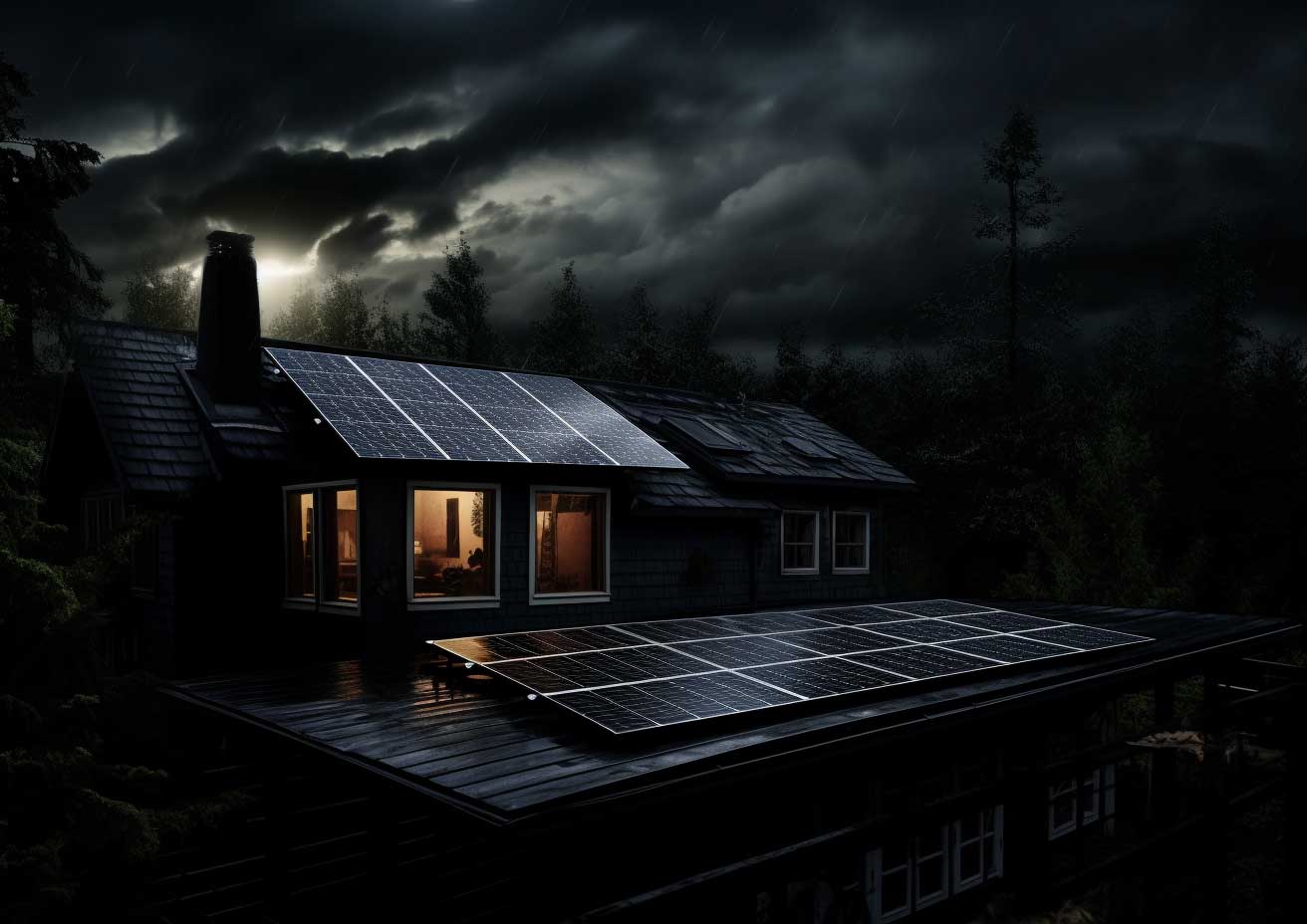The age-old debate of LED vs fluorescent lighting may seem like a small detail, but it can have a monumental effect on your workspace, from your energy consumption to your team’s morale. Let’s embark on a journey to explore the world of LED and fluorescent lighting, as these two contenders battle it out to illuminate your path to success.
Your lighting choice isn’t merely a matter of bulbs; it’s a matter of powering the productivity that fuels your enterprise. So, as you navigate the realm of LED and fluorescent lighting, consider the keywords that matter to your business: cost, energy efficiency, aesthetics, and the simple yet powerful choice of bulbs and fixtures that can shape the destiny of your commercial space.
Understanding the Difference Between Fluorescent and LED
When we delve into the intricacies of fluorescent vs LED lighting, we encounter two distinct worlds of illumination technology. LEDs, or “Light Emitting Diode”, are semiconductor devices that convert electrical energy into light. LEDs have earned their reputation for energy efficiency, thanks to their ability to produce significant brightness with minimal energy consumption. They outshine traditional lighting technologies, such as incandescent bulbs and metal halide, in energy-saving capabilities, making them a preferred choice for those aiming to lower their electricity bills and reduce carbon emissions.
Fluorescent lighting, on the other hand, relies on a different principle. It involves exciting phosphor coatings with ultraviolet light generated by mercury vapor. Compact fluorescent lamps (CFLs) and fluorescent tubes are prevalent variations of this technology. While they offer efficiency and affordability, they may not match the energy saving and environmental benefits provided by LEDs.
Types of LED and Fluorescent Lighting
Understanding the basic types of LED and fluorescent lighting is essential for businesses aiming to make informed decisions. Here are key points regarding the various types:
LED Lighting Types:
LED Bulbs: LED bulbs are versatile and come in various shapes and sizes, making them suitable for traditional fixtures. They are energy-efficient and can replace incandescent bulbs with lower power consumption.
LED Tube Light: LED tube lights are designed to retrofit into existing fluorescent fixtures, offering an energy-efficient upgrade. They come in T8, T5, and other sizes to match standard fluorescent tube dimensions.
LED Panels: LED panels are flat, thin fixtures commonly used in commercial settings. They provide a sleek and modern appearance, evenly distributing light with high efficiency.
LED Strip: An LED strip is flexible and adhesive-backed, making it ideal for accent lighting, signage, and creative applications. It’s available in various colors and can be cut to the desired length.
LED Grow Light: LED grow lights are designed for horticultural applications. They offer a specific spectrum of light to promote plant growth and are favored for their energy efficiency and adjustable light output.
Fluorescent Lighting Types:
Fluorescent Tubes: These are the most common type of fluorescent lighting and come in various sizes, including T8, T5, and T12. They are widely used in offices, retail spaces, and industrial facilities.
Compact Fluorescent Lamp (CFL): CFLs are energy-efficient alternatives to incandescent bulbs and are designed to fit into standard lamp sockets. They come in various shapes, including spiral and globe.
Fluorescent Panels: These fixtures use fluorescent tubes and are often found in drop ceilings, providing even illumination for large areas.
Fluorescent Shop Lights: Designed for workshops and garages, these fixtures are typically suspended from the ceiling and provide high-intensity lighting for tasks.
Fluorescent Grow Lights: Similar to LED grow lights, fluorescent grow lights are used for plant cultivation but rely on fluorescent technology. They are suitable for various stages of plant growth.
Fluorescent Light vs LED
The choice between LED bulbs and fluorescent bulbs is gaining prominence among homeowners and businesses, and for good reason. LEDs are remarkably energy efficient, outperforming fluorescent light bulbs by up to 80%. Unlike their fluorescent fixture counterparts, LED lights impressively convert a staggering 95% of their energy into light while losing only 5% as heat. This remarkable energy saving feature significantly lowers power consumption, ensuring a robust and consistent output at a reduced wattage.
Moreover, the longevity of LED lights is truly remarkable, with certain models boasting an impressive lifespan ranging from 50,000 to over 100,000 hours. This not only translates to substantial savings in terms of replacement costs but also contributes to the reduction of waste being sent to landfills. With these substantial advantages, it’s no surprise that LEDs are emerging as the beacon of the future in the world of lighting technology.
It’s worth noting that both LED and fluorescent lighting significantly outperform traditional incandescent bulbs in terms of energy efficiency. Incandescent bulbs, often seen as the epitome of traditional lighting, rely on a filament wire encased in glass and filled with vacuum or inert gas. Light is produced as an electric current passes through the filament, heating it until it emits light. However, this traditional method pales in comparison to the efficiency of LEDs and fluorescent lighting, making them the logical choice for those seeking both cost savings and a reduced environmental footprint.
Breaking Down LED vs Fluorescent Power Consumption
When it comes to comparing the power consumption of LED and fluorescent lighting, several key points emerge:
1. Efficiency is the Name of the Game
LEDs are the frontrunners in energy efficiency, converting an impressive 95% of their energy into light and losing a mere 5% as heat. This efficiency results in substantial cost savings for businesses looking to reduce their electricity bills.
Fluorescent lights, though energy-efficient compared to incandescent bulbs, cannot quite match the remarkable efficiency of LEDs. They convert less of their energy into visible light, with a notable portion lost as heat.
2. Light Bulb Brightness
LED lighting offers a significant brightness with lower power consumption, producing high lumen output per watt of electricity. This allows them to provide robust light output while using minimal energy. In a commercial setting, this efficiency means lower operational costs.
Fluorescent lights also deliver a good amount of lumens per watt, but they can’t compete with the efficiency of LEDs. Their energy consumption is higher for the same level of brightness, which can add up in larger spaces.
3. Life Expectancy Matters
LED lighting is celebrated for longevity, with some models lasting over 100,000 hours. This extended lifespan not only saves on replacement maintenance costs but also reduces the environmental impact by generating less waste.
Fluorescent bulbs have a respectable lifespan, but they typically fall short of that offered by LEDs. More frequent replacements can result in higher maintenance costs, both in terms of labor and materials.
4. Instant On vs. Warm-up Time
The LED fixture provides an instant light source when powered on, making them ideal for spaces where immediate, full brightness is required. This feature can enhance the operational efficiency of businesses, especially in settings where sensors or timers control lighting.
Fluorescent lights, on the other hand, often require a very brief warm-up period to reach their full brightness. This delay can be a limitation in applications with cold temperatures and affect productivity.
5. Flicker and Noise Considerations
LED lighting generally does not flicker, providing a stable and flicker-free environment. This is crucial in spaces where visual comfort and safety are top priorities, such as offices and industrial facilities.
Some fluorescent lights may exhibit flickering and produce noise, which can be distracting and lead to discomfort for occupants. Eliminating these factors is essential for maintaining a productive and pleasant atmosphere.
Cost Considerations for Fluorescent Light vs LED
When comparing the cost considerations between fluorescent light and LED lighting, there are several vital points to keep in mind:
1. Initial Investment
An LED light typically has a higher initial cost when compared to traditional fluorescent tube lights. The upfront expense for LED lights can be a concern, especially for small business owners with budget constraints.
Fluorescent lighting, on the other hand, is generally more affordable initially, making it an attractive option for businesses aiming to reduce their immediate spending on lighting fixtures.
2. Energy Efficiency and Utility Bills:
LED technology is renowned for its exceptional energy efficiency. They convert a significant portion of their energy into visible light, which translates to lower utility bills for businesses. This cost-saving aspect particularly appeals to businesses seeking to reduce their operational expenses and environmental impact.
Fluorescent lights also offer energy efficiency, especially when compared to incandescent bulbs. However, compared to LED, they tend to consume more energy for the same level of brightness, which can result in higher electricity costs over time.
3. Return on Investment (ROI)
Calculating the ROI for lighting investments is essential for small business owners. LED lighting can offer a shorter payback period due to its energy efficiency and longer lifespan. The reduced energy bills and maintenance expenses contribute to a more rapid return on the initial investment.
While providing energy efficiency, fluorescent lighting may yield a more extended payback period due to higher operational costs and maintenance. Businesses should carefully evaluate the ROI to make informed lighting choices.
4. Environmental Impact
LEDs have a lower environmental impact due to their energy-saving features and extended lifespan. Their reduced energy consumption and fewer replacements contribute to a smaller carbon footprint.
CFL bulbs, for example, while relatively efficient, may result in a higher environmental footprint due to higher energy consumption and more frequent replacements. Businesses seeking to reduce their environmental impact should consider these factors.
Which is better: LED or fluorescent? Why are LEDs better than fluorescent?
The explanations above may have given you hints about the best lighting option. The answer is LEDs.
LED lighting is the unrivaled choice for any commercial or industrial facility. An LED tube is more energy efficient and lasts longer than a fluorescent tube. An LED lamp is safer because it lacks toxic materials and is more durable than a fluorescent lamp.
How do you decide what type of LED lighting to use at your commercial facility?
Now that it is clear that LED lighting is the best choice for your facility, how do you decide which type of LED lighting to use to optimize worker comfort and productivity and maximize energy savings?
It is easy to become inundated with options when you begin to plan an LED lighting retrofit, but you can be assured with proper lighting you will reduce worker mistakes, prevent machinery accidents, reduce employee sleepiness, and decrease your energy consumption.
There are several factors to consider when deciding what type of LED lighting to install in your building. These include how many fixtures you need, how you want the light to be distributed, how bright you want the lights to be, and what type of working environment they will be used in. Take a more in-depth look at how to light a warehouse here.
WattLogic is a commercial lighting company built on finding ways to save our clients energy and money while reducing their carbon footprint. For a reason, LEDs in the commercial industrial lighting space are our core competency. We fully believe in the benefits of LED lighting and want to bring them to as many businesses as possible. Please reach out to us at (800) 834-8737 so we can help find the perfect LED lighting solution for you.




